Table of Contents
As we all know plants and their parts are a very important part of biology. A leaf is a flattened, photosynthetic organ of a plant that typically consists of a blade and petiole (stalk). Stomata are small pores located on the surface of the leaf that allow the plant to exchange gases, such as carbon dioxide and oxygen, as well as regulate the loss of water vapor through a process called transpiration. Stomata are essential for the leaf’s role in photosynthesis, where it captures sunlight to produce energy-rich molecules and oxygen.
Stomata Definition
Stomata are small openings found on the surface of the leaves and stems of the plants. They allow for the exchange of gases like carbon dioxide and oxygen, as well as water vapor, between the plant plant and its surroundings. Stomata play a crucial role in photosynthesis and transpiration, which are essential processes for the plant’s growth and survival.
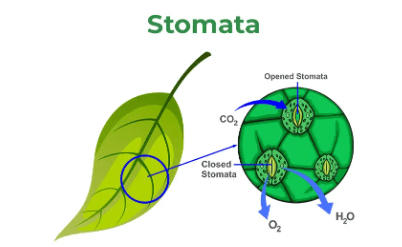
Stomata Diagram
The diagram of stomata helps illustrate how the stomatal components work together to regulate the exchange of gases and control water loss in plants. It’s essential for the plant’s survival and its ability to perform photosynthesis, as it allows for the uptake of carbon dioxide needed for carbon dioxide needed for their process while minimizing water loss through transpiration.
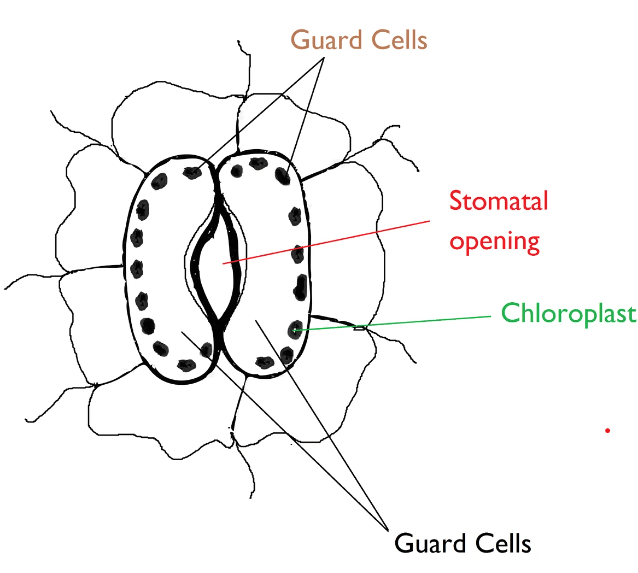
Structure of Stomata
Stomata are small openings, primarily found on the surface of plant leaves, stems, and other plant parts. They play a crucial role in gas exchange, allowing plants to take in carbon dioxide for photosynthesis and release oxygen and water vapor.
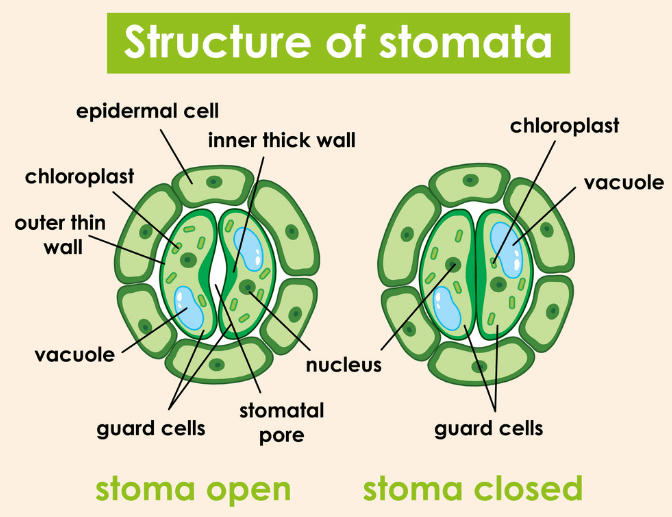
The opening and closing of the stomata are essential for a plant’s survival and growth, as they help balance water loss through transpiration and the intake of carbon dioxide needed for photosynthesis. The structure of stomata consists of several key components:
- Guard Cells: These are two specialized kidney-shaped cells that surround the opening and closing of the stomatal pore. They change shape to regulate the pore’s size in response to environmental factors like light, humidity, and carbon dioxide levels.
- Stomatal Pore: The actual opening or pore through which gases enter and exit. It’s formed between the two guard cells and can open or close to regulate gas exchange.
- Epidermal Cells: These are the surrounding cells that protect and support the stomata. They provide structural integrity to the leaf surface.
- Cuticle: A waxy layer covering the epidermal cells and stomata, which helps reduce water loss and prevents unwanted substances from entering the plants.
- Subsidiary Cells: These are cells adjacent to the guard cells and may play a role in regulating stomatal function, especially in response to environmental cues.
The opening and closing of stomata are tightly regulated by various environmental factors, including light, temperature, humidity, and the plant’s internal signaling mechanisms. This regulation helps plants balance their need for photosynthesis and gas exchange with the need to conserve water in various environmental conditions.
Functions of Stomata
Stomata are small pores found on the surface of plant leaves, stems, and sometimes other plant organs. The main function of Stomata is to regulate the exchange of gases, primarily carbon dioxide (CO2) and oxygen (O2), between the plant and its surrounding environment. It also plays a crucial role in a variety of physiological processes in plants. Stomata are essential structures for plant growth and survival, as they enable gas exchange, regulate water loss, maintain temperature, and participate in nutrient uptake and defense mechanisms. They serve several important functions, including:
- Gas Exchange: Stomatas allow for the exchange of gases, primary carbon dioxide (CO2), and oxygen (O2), between the plant and the surrounding atmosphere. CO2 is taken in for photosynthesis, while O2, a byproduct of photosynthesis, is released.
- Release of Oxygen: As a byproduct of photosynthesis, oxygen is produced in plant cells. Stomata also enables the release of excess oxygen into the atmosphere.
- Transpiration: Stoamata plays a crucial role in the process of transpiration, where water vapor evaporates from the plant into the atmosphere. This helps in the movement of water and nutrients through the plant.
- Regulation of Water Loss: Stomata can open and close to regulate the amount of water loss through transpiration. When the stomata are open, more water vapor escapes, and when they are closed, water loss is reduced.
- Temperature Regulation: By controlling the rate of transpiration, stomata can help regulate the temperature of the plant. When they open, heat is dissipated through transpiration, which can cool the plant.
- Uptake of Mineral Nutrients: Stomata facilitate the uptake of essential mineral nutrients from the soil, such as potassium (K) and magnesium (Mg), into plant cells through a process called ion uptake.
- Defense Against Pathogens: Stomata can close in response to threats from pathogens, helping to reduce the risk of infection.
Opening and Closing of Stomata
Stomata are small openings found on the surface of plant leaves and stems. The stomatal opening and closing are primarily regulated by the guard cell’s turgor pressure (water influx for opening, water loss for closing) and external factors like light, humidity, CO2, and temperature. They play a crucial role in the exchange of gases and transpiration. Here’s a brief explanation of how stomata open and close:
- Opening of Stomata:
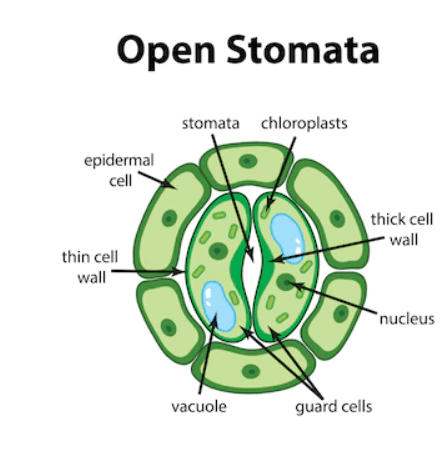
- Stomata are primarily open in response to environmental cues, such as light and humidity.
- During the day, when there is sufficient light, the guard cells, which flank the stomatal pore, take up water through osmosis. This causes the guard cells to swell and curve outward, creating an opening or pore between them.
- The influx of potassium ions (K+) into the guard cells helps to maintain turgor pressure and contributes to stomatal opening.
- The stomatal opening allows the exchange of carbon dioxide (CO2) for photosynthesis while simultaneously allowing for water loss through transpiration.
- Closing of Stomata:
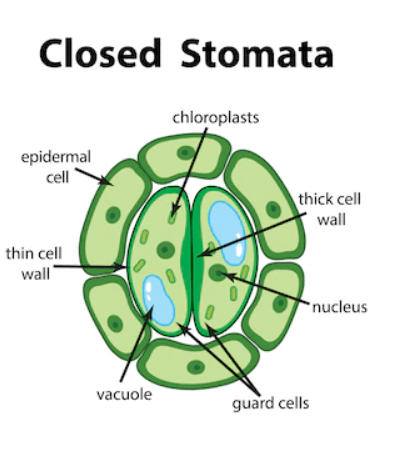
- Stomata close to prevent excessive water loss during periods of high heat or low humidity to maintain plant hydration.
- Closure is initiated when environmental conditions become unfavourable, such as intense heat, low humidity, or water scarcity.
- The guard cells lose water, and their turgor pressure decreases. This causes them to become flaccid and close the stomatal pore.
- The efflux of potassium ions (K+) from the guard cells plays a role in stomatal closure.
Types of Stomata
There are five main types of stomata, named as Anomocytic stomata, Anisocytic stomata, Paracytic stomata, Diacytic stomata, and Gramineous stomata. Each type of stomata has a unique arrangement of guard cells and subsidiary cells, which influences their function in regulating gas exchange and water loss in plants.
| Types of Stomata | ||
| Stomata Type | Description | Examples |
| Anomocytic Stomata | These are guard cells surrounded by irregularly arranged epidermal cells. | Arabidopsis, tomatoes. |
| Anisocytic Stomata | These are guard cells flanked by three subsidiary cells, of uneven sizes. | Ficus, Solanum melongena (Eggplant). |
| Paracytic Stomata | These are guard cells between two parallel subsidiary cells. | Oleander, Nerium oleander. |
| Diacytic Stomata | These are guard cells between two perpendicular subsidiary cells. | Zinnia, Pelargonium. |
| Gramineous Stomata | A specialized type of stomata with dumbbell-shaped guard cells. | Grasses (Poaceae family). |
1. Anomocytic Stomata
The Anomocytic Stomata lack any specific surrounding cell arrangement. They are characterized by having guard cells that are surrounded by epidermal cells without any distinct pattern.
2. Anisocytic Stomata
In the Anisocytic stomata, the guard cells are flanked by three subsidiary cells, one on each side. Two of these subsidiary cells are smaller than the third one, creating an uneven distribution.
3. Paracytic Stomata
Paracytic stomata consist of two subsidiary cells that are parallel to the guard cells. This arrangement creates a linear, elongated appearance, and the guard cells are located between the subsidiary cells.
4. Diacytic Stomata
Cyclocytic stomata are characterized by having guard cells that are surrounded by a circular arrangement of subsidiary cells. These subsidiary cells encircle the guard cells.
5. Gramineous Stomata
The Gramineous stomata are specific to grasses and have dumbbell-shaped guard cells, which help prevent excessive water loss while maintaining efficient gas exchange in the challenging environments where grasses often grow.
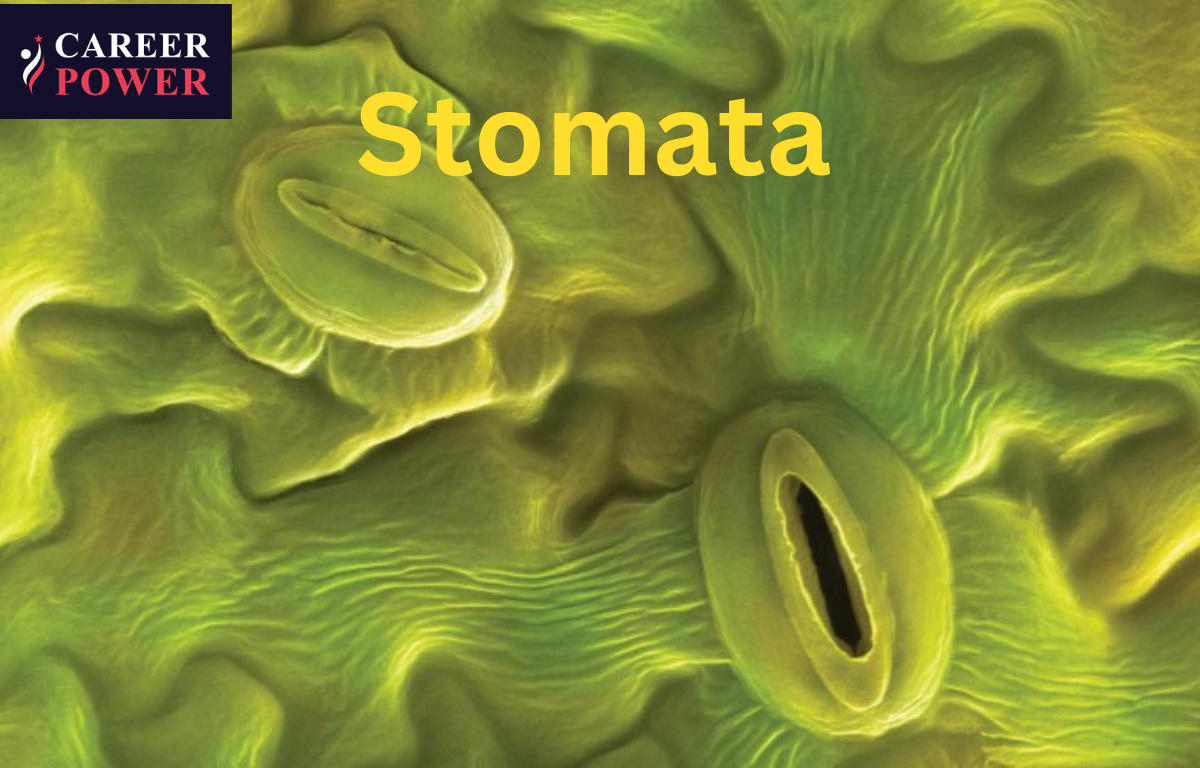
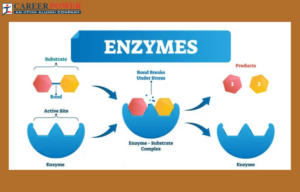 Enzymes: Definition, Functions, and thei...
Enzymes: Definition, Functions, and thei...
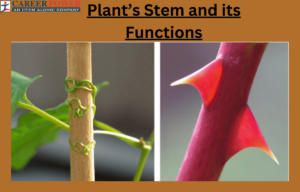 Plants Stems - Structure, Function of a ...
Plants Stems - Structure, Function of a ...
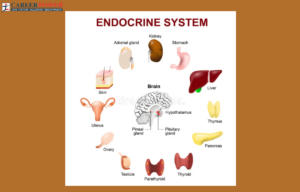 Human Endocrine System, List of Endocrin...
Human Endocrine System, List of Endocrin...
